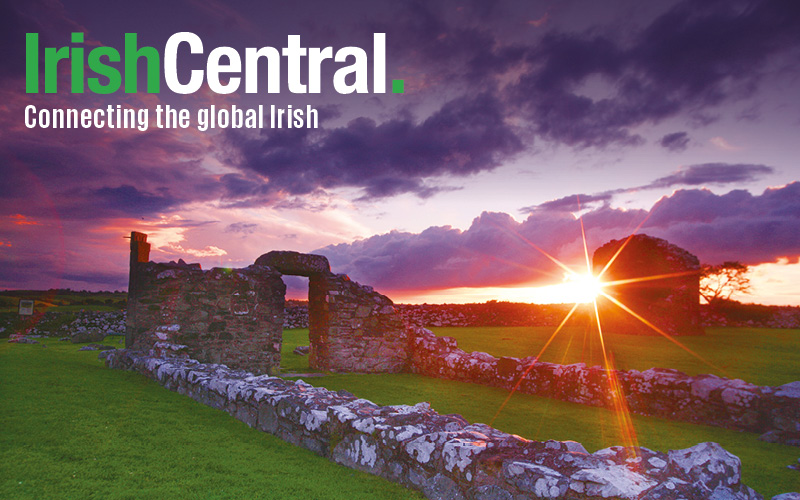Irish legend has it that Rowan trees once dropped their vibrant red berries into a well full of salmon. The fish that ate the fruit gained red spots and great wisdom. While men tried desperately to catch and eat these “fish of knowledge,” women were barred from catching the salmon.
One day, however, a brave girl named Sionan (Shannon), caught and ate one of the wise fish. A great flood then burst from the well, carrying her westward to the sea, forming the River Shannon.
This well, or pool, which is the traditional source of the River Shannon, is known as the Shannon Pot. Unbeknownst to many, New York has a Shannon Pot of its very own — the Shannon Gaels.
Founded in 2002 with a mere 12 players, although an eager bunch, they struggled simply to field a full team. Paying tribute to their namesake, the Gaels have since flooded the well from which they originated and have become the fastest growing minor GAA club in all of North America.
With membership growing at an average of 150 percent annually, the Shannon Gaels currently have 20 teams and nearly 300 players.
The only minor GAA club serving the children of Queens, the club consists of members from all 32 counties and currently has teams of girls and boys in the under-8, under-10, under-12, under-14 and under-16 groups in Gaelic football, hurling and camogie. Even an under-6 beginners program is a major component to the club.
For their first seven years the Shannon Gaels had no permanent field on which to train. They made do with small sections of Juniper Valley Park and Forest Park but were more often than not asked to leave as the space was otherwise occupied.
Sunnyside Gardens Park served as a temporary home for the Gaels, but the need for their own space to grow as a club was evident.
In 2009, after a visit to a Shannon Gaels football game in Sunnyside Gardens Park, New York Mayor Michael Bloomberg himself was smitten by the game and the culture it was infused with. He recognized the urgency with which a home field was needed, and the ball started rolling in what is now referred to as the “Field of Dreams” project.
The Gaels recently secured a contract with the City of New York for the lease of over seven acres within Frank Golden Park in College Point, and have been granted approval for its development by the New York City Parks Department.
This development, however, comes at a price. With an estimated cost of $4.5 million, the road ahead may seem long and arduous. It’s worth it all though, according to field committee chairperson Fiona Smyth.
“There is nothing more rewarding, no investment too great when it is for children. This entire project is to provide our children and all children in Queens and the surrounding areas with state of the art playing fields that are safe and secure. They deserve the best,” she told the Irish Voice.
And the best they will have. When all is said and done, the Field of Dreams will consist of a full sized sand carpet GAA playing pitch, as well as a training pitch and scrimmage area.
A high performance flood-light system will keep the training sessions and matches going despite the early fall evenings, while a car park and numerous facilities will allow the Shannon Gaels to be the host of many cultural and field day activities.
While some funds are in the process of being secured with GAA President Liam O’Neill and his overseas committee, as well as with New York City’s capital budget, corporate investors and individual contributors, this is one of those cases in which the community needs to rally together to get the job done.
As has been the case for generations of Irish who have immigrated to America, Gaelic sport remains one of the main forms of staying connected to home. Many other immigrant groups have come to this melting pot known as New York and have completely assimilated themselves. Sometimes it takes a generation or two, but very often immigrants forego their cultural identity to blend into American society.
The Irish deserve praise for what they have managed to do. While assimilating to a degree of respect for the new place they call home, the Irish never seem to let go of where they came from. They manage to stay true to themselves, to their ancestors, to their culture and are always proud to be Irish.
Larry McCarthy, former chairman of the New York GAA, summed it up well in the book Making the Irish American.
“Often overlooked as merely amusement, sport represents a significant chapter in Irish American history as it symbolizes both the transfer of native culture to sites of immigration and the adoption of a new nations culture,” he said.
The Shannon Gaels pride themselves on being a home away from home. It’s about more than sports. It’s about a community and a social network with which to share a love of Irish heritage.
It’s a smaller world today. With advanced technology and connectivity to Ireland in so many forms, it may not seem as necessary for Irish immigrants to embrace a “New York family” anymore.
That sense of needing a strong community spirit abroad may be in jeopardy, which is all the more reason to foster it and cherish it by supporting groups like the Shannon Gaels.
It’s not just about Irish immigrants either. Queens is one of the most ethnically diverse communities in the country and the diverse nature of the Shannon Gaels is evidence of that. All children with an appreciation of the culture of Gaelic games, no matter their background, are welcome with open arms.
In 1913, when Croke Park was acquired by the GAA, it consisted of only two stands. Today, it has a seating capacity of over 82,000 and is the fourth largest stadium in Europe.
While the Shannon Gaels’ slice of Queens is on a much smaller scale and while U2, Celine Dion, or Neil Diamond will not be taking stage at Frank Golden Park anytime soon, it lends an example of what can be done when a tenacious group of people gets together.
Besides, Queens has something even more valuable than the A-list superstars that adorn the stages of Croke Park. It has kids with a spark for Gaelic games. A spark ignited by their parents or their friends, but kindled by their fellow Shannon Gaels.
For more information on the Shannon Gaels and how you can help make the Field of Dreams become a reality, visit www.shannongaels.org.




Comments